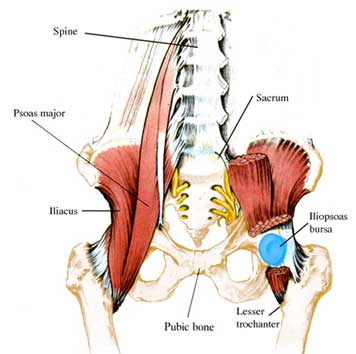I've previously explained that the two most common reasons for a running related injury are biomechanical issues or training mistakes. You can only drive your car on a flat tire so long and you can only drive too fast for so long before you get pulled over! A little over 2 months ago I sustained an injury the old fashioned way - bad luck (and maaaybe a little foolishness)! Remember that freak snowstorm that hit in late October? Well, the next day I went for a long snowy, muddy, icy trail run with a buddy and enjoyed every second of it.
Afterwards, we both remarked how sore we would feel the next day due to the challenge of maintaining balance while running up and down the slick, hilly trails. Well, as the days, then weeks passed, my soreness - ONLY while running, of course(!) - never went away. I was becoming convinced I'd seriously injured my hip joint. Labral tear? Surgery? Stress fracture? Crutches? Ugh.
X-rays came back normal. Muscle testing was strong and balanced.
So it was likely just a deep hip muscle strain. Turns out I just needed to rest it. I learned I could cycle and strength train (no heavy deadlifts for the time being) without pain and I feel that active rest is WAY better than becoming a slug 9 times out of 10. The increase in circulation often proves to be the magic pill.
So good news: I ran for the first time in 9 weeks on Monday and I'm happy to report ZERO pain! I feel fortunate that I didn't need any surgery and lucky that I can begin enjoying my favorite sport again.
Next challenge? Staying patient while building my mileage up. And that's what I want to share with you.
I'll be following a very basic, but sound “return to training” plan. I believe it was renown running coach Dr. Jack Daniels who first recommended this increasing mileage pattern and it has served many of my clients well in the past.
Here's what he says:
3 wks @ 33% load
3 wks @ 50% load
3 wks @ 70% load
3 wks @ 85% load
3 wks @ 100% load
This particular pattern works well for higher mileage runners, say greater than 30mpw. Depending on your injury and the mileage you run, you may manipulate this a bit. For example, if you run 15 miles per week, you can probably be more aggressive with your comeback. But in general, plan on taking a month longer coming back than you spent on the sidelines.
So let's say your typical mileage is 40 miles per week. Here's how it would look.
3 wks @ 13 miles
3 wks @ 20 miles
3 wks @ 28 miles
3 wks @ 34 miles
3 wks @ 40 miles
After you complete 6 weeks of training at your old 100% level you will be fully adapted to that amount. Add speed sparingly during this time. It's never wise to add two stressors to the body at the same time – too much injury risk.
I'm excited to see you out on the trails, the track or Run Club at lululemon Walnut Street every Thursday @ 6pm!
One thing is for sure. I am NOT running on ice any longer. Forget that!
How about you? Are you overcoming an injury right now?




